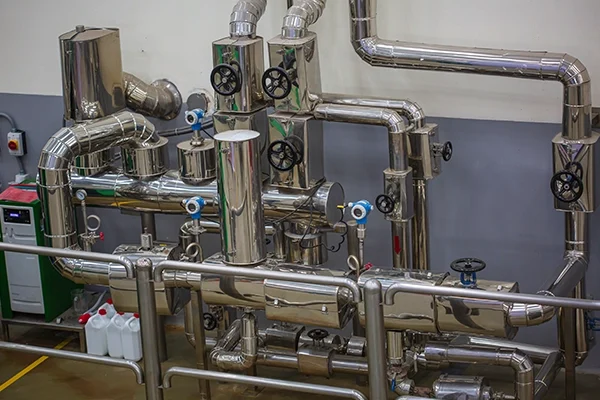Valves and instrumentation have gone from being simple technical components to becoming the core of industrial efficiency and safety. You have seen it: ships, factories, and power plants no longer depend solely on the power of their engines, but on the precision with which fluids, pressures, and temperatures are controlled. This evolution, marked by technological innovation, is redefining how we work in the naval and industrial sectors.
From mechanical to digital
A few decades ago, valves and measuring instruments operated almost exclusively manually. Today, thanks to digitalization, many of these parts have been transformed into smart devices capable of integrating into automated systems.
Manual reading of pressure gauges has given way to electronic transmitters that send data in real time. The same is true for valves: you can now control them remotely, even anticipating potential failures before they occur.
Integration with advanced management systems
Modern valve and instrumentation systems do not work in isolation. You are witnessing how they are integrated into digital platforms that allow you to monitor the entire operating cycle of a ship or industrial plant.
This means that you can have real-time information on pressures, flow rates, and temperatures on a single control panel. This integration not only makes work easier, but also ensures that every decision is backed by reliable data.
Adaptation to stricter regulations
In recent years, international safety and environmental regulations have become more rigorous. You will see that valve and instrumentation equipment must meet higher standards, from quality certifications to endurance testing under extreme conditions.
This requirement is not an obstacle, but an opportunity: those of you who work with certified equipment know that reliability and safety translate into trust, both for the crew and for customers and business partners.
Applications in the naval sector
On ships, every valve and every instrument plays a vital role. You know this: controlling fuel flow, engine temperature, or boiler pressure is not optional; it is a matter of safety and performance.
Thanks to technological advances, today you can count on valves that are more resistant to marine corrosion, instruments that provide stable readings even under vibrating conditions, and smart systems that help reduce energy consumption.
Looking to the future
Evolution does not stop. The future of valves and instrumentation will be marked by artificial intelligence and 5G connectivity. You will see how systems will be able to learn from the behavior of equipment, anticipating needs and adjusting parameters automatically.
In addition, the development of more durable and lightweight materials will increase the efficiency of ships and industrial plants, with less maintenance and greater resistance to corrosion and wear.
Conclusion
Valves and instrumentation have come a long way, from manual controls to intelligent digital systems. You, who work with these technologies on a daily basis, are witnesses to how each advance brings greater safety, efficiency, and sustainability.
Investing in innovation, training, and certified equipment is not just a technical improvement: it is the guarantee of a competitive future in a rapidly advancing sector. Because in a world where every piece of data counts, precision is the key to success.

